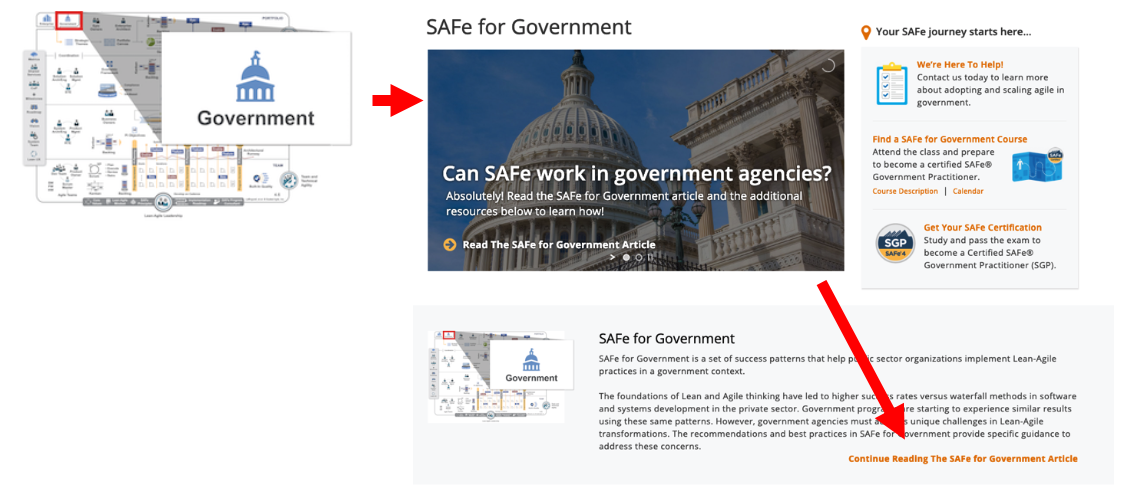
More guidance for overcoming common barriers to Lean-Agile adoption in government
Last year, we released our SAFe® for Government course to help agency decision makers understand how to overcome the most common barriers to Lean-Agile and DevOps adoption in the public sector. The feedback so far from the SPCs who have delivered this training has been extremely positive! We’re also excited to see that just over 25 percent of the scheduled SAFe® for Government courses listed by our partners on the training calendar are outside of the U.S.!
One of our ongoing commitments to the SAFe community is to ensure that the knowledge we include in our courses is grounded in the guidance articles that we freely provide through the Scaled Agile Framework® website. When we released SAFe 4.6 last October, we included a summary article on SAFe for Government, plus the first three in a series of nine ‘deep-dive’ articles to address the biggest SAFe implementation issues we observed. These initial topics included:
• Building on a solid foundation of Lean-Agile values, principles, and practices
• Creating high-performing teams of teams of government and contractor personnel
• Aligning technology investments with agency strategy
Since then, we’ve been working hard to complete the remaining six articles and are excited to announce that the next four in the series are now live! These new additions focus on:
• Transitioning from projects to a Lean flow of epics
• Adopting Lean budgeting aligned to value streams
• Applying Lean estimating and forecasting in cadence
• Modifying acquisition practices to enable Lean-Agile development and operations
There are a couple of ways you can access all this great content. Click each individual article title above, or click the government icon in the SAFe Big Picture to jump to our landing page.

While you’re on the government landing page, take a moment to explore the wealth of information we’ve included on the resources, videos, and events pages. The SAFe® for Government course references many of these sites and documents, but what’s great about the landing page is that you don’t need to copy long URLs from the course workbook to find them—just navigate to the site and find what you need. Plus, we’re constantly updating the site, so bookmark it and check back frequently.
Continue watching for future blog posts announcing the release of the last two articles in this series, as well as information regarding our first major update to the SAFe® for Government course—coming soon!
Be SAFe,
—Steve






Wim Hoogenraad
Team formation of SCRUM teams can be disappointing sometimes.
Bruce Tuckman described 4 phases of team formation: Forming, Storming, Norming and Performing. We cannot expect a new SCRUM team to perform as well as it has just been put together. It takes more to get a team to perform well.